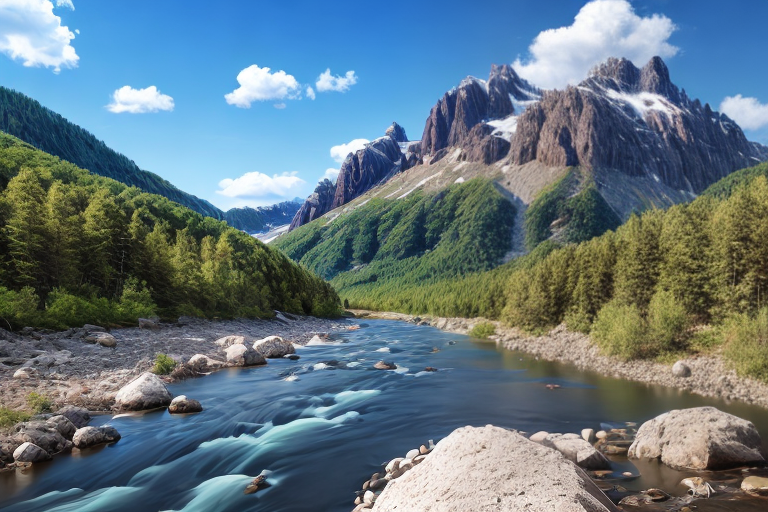
In today’s ever-changing and unpredictable world, having access to reliable survival shelters has become more important than ever. Whether you are a business owner or a brand, having a safe retreat during times of uncertainty is crucial.
These ultimate retreats, including refuge homes, underground bunkers, and hideouts, provide a secure haven when disaster strikes.
When selecting a survival location, strategic positioning is key.
It should offer protection against natural disasters and potential threats while also providing easy access to essential resources like water and food supplies. The design and construction of these shelters are vital in ensuring they can withstand extreme weather conditions and potential attacks.
Amenities such as sanitation and heating contribute to the overall livability of these wilderness refuges and bugout shelters, promoting self-sufficiency.
In a world where preparedness is essential, survival shelters offer peace of mind and a sense of security. By equipping these disaster retreats with the necessary tools and supplies, individual’s can ensure their self-sufficiency and survival in any emergency.
Click here to learn more Survival Tips from Pro Outdoor Survival
Why Survival Shelters Matter
When it comes to safeguarding individual’s during emergencies or unforeseen circumstances, secure retreats are indispensable. Acting as survival sanctuaries, these havens offer a controlled environment that shields occupants from various threats.
Whether its the forces of nature, such as hurricanes or earthquakes, or man-made dangers like civil unrest or nuclear accidents, these retreats are designed to withstand extreme conditions.
They provide a sturdy structure that can endure high winds, collapsing buildings, and falling debris, ensuring the safety and well-being of those seeking refuge.
Equipped with essential resources and supplies, these retreats are vital for sustenance and survival during a prolonged period of isolation or limited access to outside resources. Beyond their practical function, these retreats also offer individual’s an opportunity to disconnect from the chaos of modern life, providing a space where self-sufficiency and survival skills can be honed.

Choosing the Perfect Survival Retreat Location
When choosing the perfect location for an emergency preparedness retreat, there are several factors to consider. The geographical positioning should be assessed to determine the potential risk of natural disasters such as hurricanes, earthquakes, or floods.
Ensuring that your retreat is not immediately vulnerable during times of crisis is crucial.
Easy accessibility to your retreat, especially in emergencies, is vital for your safety.
You should also take into account the availability of necessary resources like water, food, and shelter for long-term sustainability. Evaluating the areas security and proximity to medical facilities are equally important aspects to consider.
Lastly, the size and layout of the retreat should provide ample space for the comfort of you and your family.
| Factors to Consider | Relevance |
|---|---|
| Geographical positioning | Potential risk assessment of natural disasters |
| Accessibility | Important during emergencies |
| Availability of necessary resources | Water, food, and shelter for long-term sustainability |
| Security and proximity to medical facilities | Ensuring safety and healthcare access |
| Size and layout of the retreat | Ample space for comfort of you and your family |
Key Features of a Secure Hideout
A secure hideout is more than just a secret location tucked away in the wilderness. It is a sanctuary, a remote haven where individual’s can find solace and protection during times of crisis or unexpected situations.
These retreats, also known as fortified shelters or safe havens, are designed to withstand the test of nature and man.
But what are the key features that make a secure hideout truly impenetrable? let’s explore some essential elements that are necessary for creating a reliable sanctuary.
Designing and Building Your Refuge Home
When it comes to designing and building your refuge home, it is crucial to prioritize its ability to withstand emergencies and natural disasters. To ensure the structural integrity of your sanctuary, reinforced walls, roofs, and strategically placed storm shelters are essential.
This comprehensive guide explores various techniques and materials that can enhance the strength and durability of your refuge home.
Sustainability is another vital aspect to address, by incorporating eco-friendly features like solar panels, rainwater harvesting systems, and efficient insulation, you can create a self-sufficient living environment.
Functionality is also key, and this guide provides innovative space-saving solutions and efficient floor plans to maximize limited space. It emphasizes the importance of being prepared for emergencies by creating emergency plans, stocking essential supplies, and establishing communication systems.
With this valuable resource, you can confidently design and build a home that meets all your needs in times of crisis.
Advantages of self-sufficient Wilderness Refuges
Self-sufficient wilderness sanctuaries offer a multitude of benefits for those seeking solace in nature. These sanctuaries not only provide a safe and secure environment in the face of emergencies but also foster self-reliance and independence.
With refuge bunkers and self-sustaining dwellings in place, residents can rest assured knowing they are well-prepared for any unforeseen circumstances.
Living off the grid allows individual’s to develop valuable skills in sustainability and conservation.
Whether its growing their own food or harnessing renewable energy sources, residents of wilderness sanctuaries can become stewards of the environment. And let’s not forget the therapeutic benefits of spending time outdoors – hiking, fishing, and sheer tranquility await those who seek solace in these self-sufficient wilderness retreats.
Stocking and Maintaining Bugout Shelters
Stocking and maintaining bugout shelters is a crucial aspect of being prepared for any crisis. These secure havens provide the necessary resources for survival during emergency situations.
It is essential to ensure that these shelters are well-supplied with items such as food, water, first aid kits, and sanitation supplies.
Equipping the shelters with flashlights, batteries, and communication devices is also important to stay connected and informed.
Regular inspections and restocking of these shelters are necessary to maintain their effectiveness. Conducting inspections every six months will help ensure that supplies are intact and in good condition.
It is important to replace any items nearing expiration to guarantee their reliability.
| Essential Supplies | Importance |
|---|---|
| Food | Crucial for sustenance during emergencies |
| Water | Necessary for hydration and basic needs |
| First Aid Kits | Provide medical assistance in case of injuries |
| Sanitation Supplies | Maintain hygiene and prevent the spread of diseases |
| Flashlights | Ensure visibility in low-light situations |
| Batteries | Power flashlights and other devices |
| Communication Devices | Stay connected and receive important information |
Creating Sustainable Communities with Survival Compounds
When it comes to establishing resilient communities, the location is a vital consideration. Opting for areas with minimal susceptibility to natural disasters like floods, earthquakes, or hurricanes is crucial for ensuring the safety and long-term sustainability of these communities.
Access to essential resources such as water and fertile land greatly contributes to their ability to thrive.
By thoughtfully selecting the sites for sustainable communities, we can create self-sufficient and resilient villages that are equipped for emergencies and can thrive in challenging environments.
The design and construction of these communities also play a significant role in their sustainability. By employing eco-friendly materials and techniques, we can minimize the environmental impact of off-the-grid or remote shelters.
The integration of renewable energy sources like solar panels and wind turbines further reduces reliance on traditional energy grids, making these compounds more eco-friendly.
Essential Skills for Living Off Grid
Living off the grid requires a unique set of skills to thrive in a self-sustaining and independent lifestyle. Whether you are a business or individual, planning to build a survival shelter, retreat to a remote location, or enhance your emergency preparedness, there are several essential skills that you should focus on.
Self-sufficiency is a key aspect of off-grid living, and developing skills like growing your own food, hunting or fishing, and collecting rainwater will be crucial for sustaining yourself without modern conveniences.
Learning about renewable energy sources such as solar panels, wind turbines, or hydroelectric systems will help you generate your own power and reduce your reliance on the grid.
Construction and DIY skills are also essential for building and maintaining your own shelter, while water management skills like conservation, purification methods, and rainwater collection will ensure a sustainable and reliable water supply. In remote locations, access to resources and services may be limited, so having these essential skills will be vital for a successful off-grid survival homestead.
Bartering Skills Prepare for Collapse
Navigation without modern technology A guide

























